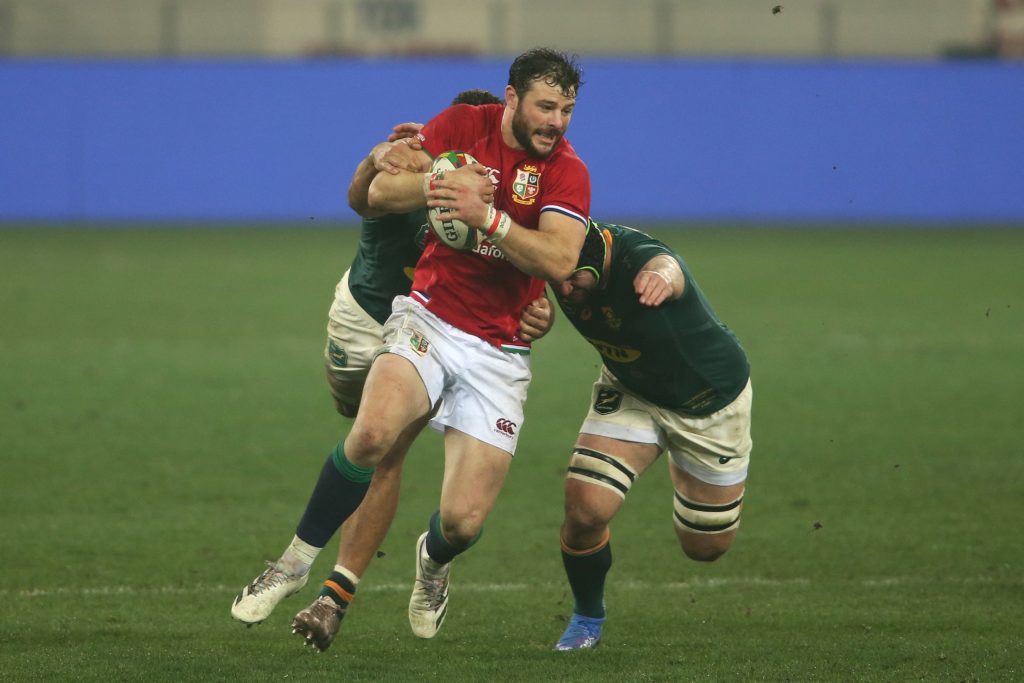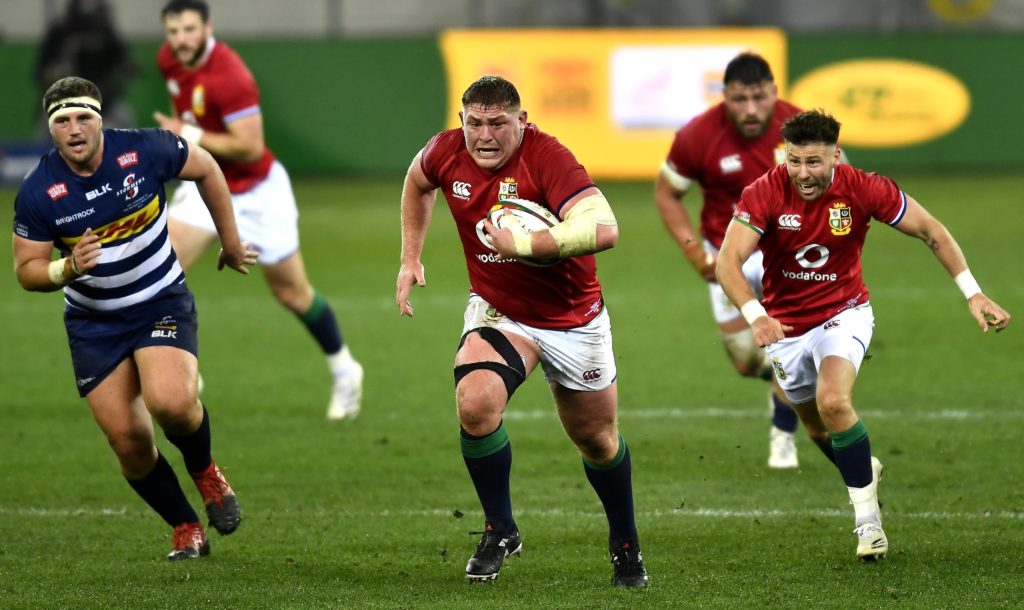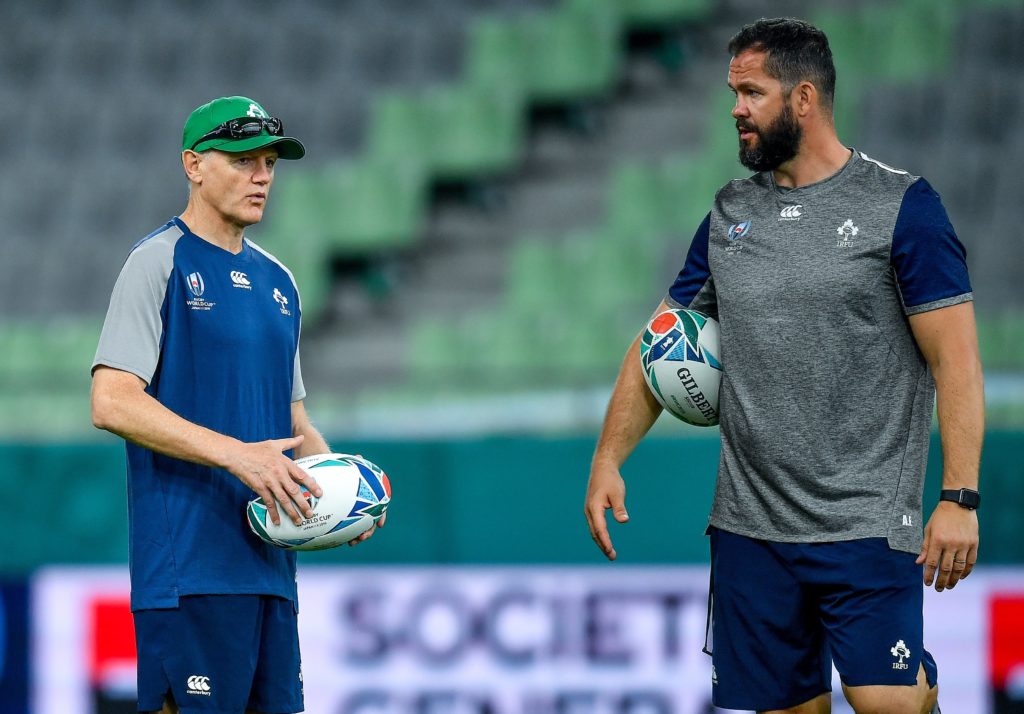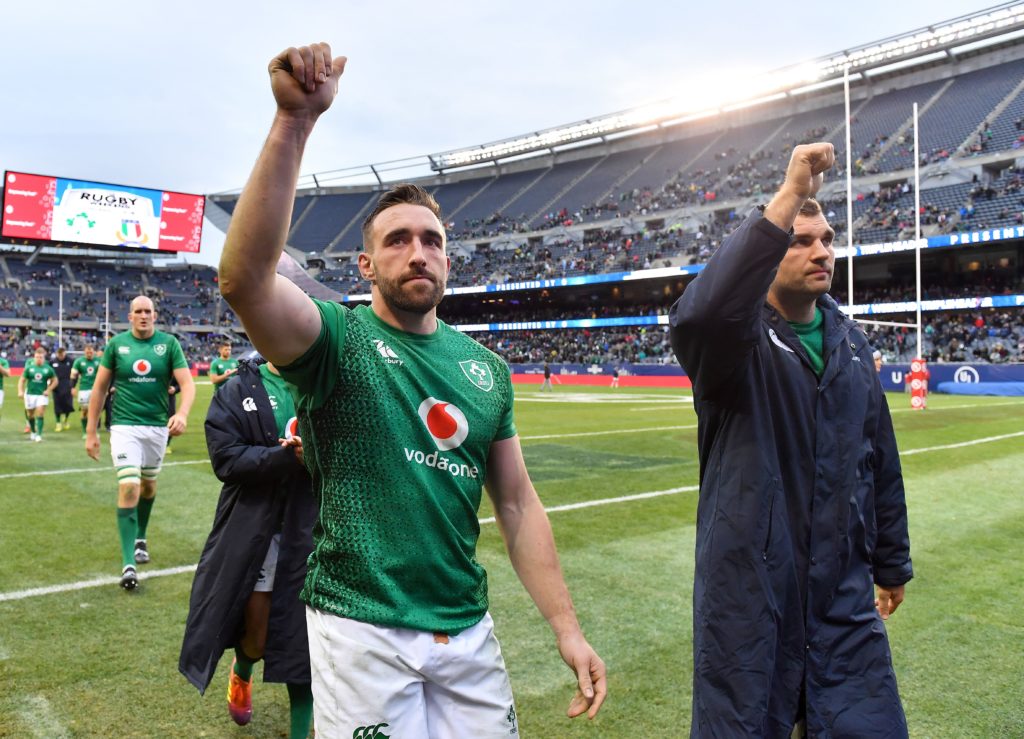For the handful of Irish players on the field in Cape Town, the last blast of Mathieu Raynal’s whistle brought the curtain down not only on the British & Irish Lions series but on the longest season they will ever face.
With the Covid-19 pandemic having an unprecedented effect upon the sporting calendar, Bundee Aki, Robbie Henshaw, Jack Conan and Conor Murray were all at the end of 50 weeks of virtually uninterrupted action, with Tadhg Furlong only spared a seat in the same boat thanks to the injury that delayed his seasonal bow until the mid-winter.
So thinly spread was Henshaw, arguably Ireland’s best performer across the seemingly never-ending campaign, that when all was said and done he’d worn three different-coloured jerseys in nine separate iterations of six different competitions.
The next year already feels of even greater importance, a campaign that will set the national side up to stride confidently towards the future or remain leadened with the designation of a work in progress.
More so than any others at the end of this most intense of fixture lists, those retreating back from South Africa could be forgiven for a desire to banish all thoughts of the game for a little while. And yet in their absence, as Irish rugby continues to grapple with the age-old debate regarding babies and bathwater, preparations for the next campaign are already well underway in Dublin, Belfast, Limerick and Galway.
With the likes of Johnny Sexton, Keith Earls and Cian Healy given the summer off from Ireland duty having not been a part of Warren Gatland’s plans, some of the country’s most senior men were back in training with their provinces as early as July, while those whom Andy Farrell relied upon to see the national side past the challenge of Japan and the USA have since joined them.
Their return to match action is now only weeks away with a hugely significant season in store. For, as remarkable as the past 18 months have proven to be, the next year already feels of even greater importance, a campaign that will set the national side up to stride confidently towards the future or remain leadened with the designation of a work in progress.

The chaos of the pandemic, creating concurrently both a distracting narrative and a sense of near stasis, has only added to the notion that the hangover of how the side slipped from their historic peak of winning a Grand Slam, securing a series in Australia and toppling the All Blacks in 2018 to yet another ignominious World Cup quarter-final defeat the next year has lingered long with the enduring fugue representing a team caught not between stools but eras.
For the first time in two decades, Ireland have been unable to rely upon either their greatest modern player, Brian O’Driscoll, or their greatest modern coach in Joe Schmidt. When last neither were in situ, Ireland were a rabble, a side who at various points in the 1990s spent three consecutive seasons in the basement of the Five Nations standings, never emerging from the bottom two spots, lost three times in a row to Italy and dropped a series to Namibia.
From the end of 2019 to today, Ireland have neither faltered nor soared. Their results show nothing to spark much in the way of consternation while simultaneously not quite befitting of a team, officially at least, ranked as the fourth best in the world. They have reverted to neither their recent nor historical norm.
For fans of a certain vintage, those that remember those dark days of the 90s, there’s an understandable psychosis to it all, one akin to a lottery winner fearing they’re soon to be informed there has been a clerical error and normal service must soon be resumed.
There remains a sense that we are on the cusp of Ireland’s third great evolution in the professional era without it having truly begun to take shape. The production line hasn’t stalled but the transition hasn’t been seamless.
It’s not necessarily a new notion. Even in the midst of what was then unparalleled success of the first decade of this century, there were concerns that the proximity in which O’Driscoll, Ronan O’Gara, Gordan D’Arcy, Paul O’Connell et al emerged was a once-in-a-lifetime occurrence. Only when the likes of Sexton, Rob Kearney, Rory Best and Healy took the side to new and prolonged heights were the fears allayed that Ireland’s window of opportunity would stretch only as long as their gilded core remained.
But for all the modernisation of systems and structures since then, all the expectation that Schmidt, as well as Michael Cheika, Rassie Erasmus and Pat Lam, will be looked upon as the rising tide that lifted all boats, there remains a sense that we are on the cusp of Ireland’s third great evolution in the professional era without it having truly begun to take shape. The production line hasn’t stalled but the transition hasn’t been seamless.
Moving from the ‘Golden Generation’, through the Schmidt years and now into the beyond, just what that next frontier looks like remains obscured.

And yet by the time the crop of Lions filter back in, the first game of Ireland’s 2023 World Cup against as yet unknown opponents will be just two years away. This side of Christmas, we’ll be closer to that trip to Bordeaux, with all its haunting links to the disastrous 2007 tournament, than to the day the All Blacks so unceremoniously brought the curtain down on the storied reign of Schmidt.
So, too, will we be two years through Andy Farrell’s four-year contract as the head coach, his promotion of 2019 coming three years after he joined the ticket as his predecessor’s defensive specialist.
With South Africa and Scotland in their pool – and a prospective quarter-final against either the All Blacks or the hosts – and for all the water still to pass under the bridge, it remains obvious that Ireland will need significant improvement.
If Erasmus and his rapid turnaround of a once-flailing South Africa into world champions has eroded somewhat the sense that the Webb Ellis is a trophy for which a four-year cycle of careful planning is required, there is little doubt that come the end of this campaign just what sort of panel is likely to carry Ireland to France should have come into considerably sharper focus.
With South Africa and Scotland in their pool – and a prospective quarter-final against either the All Blacks or the hosts – and for all the water still to pass under the bridge, it remains obvious that Ireland will need significant improvement in the interim, with four games against New Zealand and trips to Twickenham and Paris in the next 12 months, to provide exacting measurements of their progress.
In his first interview in the position during the 2019 festive period, Farrell rejected the idea that World Cup to World Cup thinking was the answer to the country’s quarter-final block but, even by his own estimations, a side for the tournament should now be taking shape.

“I’m not thinking about four years’ time,” he said then of his first season in the job.
“Of course I’m thinking about progression — fresh faces and progression is a good thing for the here and now. But we’ve got to deal with the here and now, the medium term and the long term.
“You won’t get to the long term if you take your eye off the ball with the here and now and the medium term.
“So, yes, I don’t think of four-year cycles. A year? Seeing how your side will look in a year’s time, maybe two years’ time? I suppose that’s as far as it gets really.”
The signature win of the coach’s tenure to date, the 32-18 win over England in the Aviva Stadium back in March, certainly felt as if it was very much of that “here and now” focus, coming as it did with a side that boasted perhaps just three alterations from what could have been viewed as a typical Schmidt line-up.
That day in the Aviva Stadium the absence of three of the Kiwi’s regulars in Kearney, Best and Devin Toner was offset by the inclusions of Hugo Keenan, Rob Herring and newly-minted Lion Tadhg Beirne. Only the former won his first cap since the last World Cup, while elsewhere it remained very much a case of the familiar too.
Rónan Kelleher, Caelan Doris, Will Connors, Gavin Coombes, Robert Baloucoune and Craig Casey have all shown enough promise 25 months out to believe they could be starters come the next World Cup.
Set against such continuity, however, have been increasing signs of a pivot towards the years ahead, towards the games that will come to define how Farrell’s tenure is ultimately appraised.
While there have been debates about their level of usage, 22 new caps have made their bow since that dispiriting day in Tokyo, among whom Rónan Kelleher, Caelan Doris, Will Connors, Gavin Coombes, Robert Baloucoune and Craig Casey have all shown enough promise 25 months out to believe they could be starters come the next World Cup.
So firmly has Keenan seized his opportunity, that he already feels set apart from that group and can be viewed as the incumbent in the No15 jersey.

Meanwhile, Beirne, Henshaw and Conan will all begin the next campaign possessing the increased stature that comes with being Test players for the British & Irish Lions, while Furlong’s form in South Africa offered proof that he is back to his best after almost a year on the sidelines between February 2020 and January 2021.
The likes of James Ryan, Garry Ringrose and Jacob Stockdale all remain no older than 26 and Joey Carbery finally appears to have put his injury nightmare behind him.
The seeds of Ireland’s next team have been sown. The coming season feels key in determining whether they bear fruit in time for 2023.
More stories from Jonathan Bradley
If you’ve enjoyed this article, please share it with friends or on social media. We rely solely on new subscribers to fund high-quality journalism and appreciate you sharing this so we can continue to grow, produce more quality content and support our writers.



Comments
Join free and tell us what you really think!
Sign up for free